Below are examples of intertidal greens from the surf-swept shores of the northern Oregon coast. A fair number of the green seaweeds pose identification challenges (for me!), so I’m happy with genus-level identifications when I can get there. Please drop me a line if you see a mistake. My organization loosely follows Kozloff (1993) and Lamb and Hanby (2005), showing species you might encounter in the field, from highest to lowest in the intertidal. My photos are all from northern Oregon unless noted, and common names, if I use them, are my choice. Experts cover the seaweeds shown below, and many more, in the resources listed at the bottom of the page.
Let’s explore some green seaweeds!
In the right setting, frequently at freshwater seeps, Ulva intestinalis can creep to the highest reaches of the splash zone and above. You can also find it in high tidepools. (I a few other common Ulva farther down on this page.)
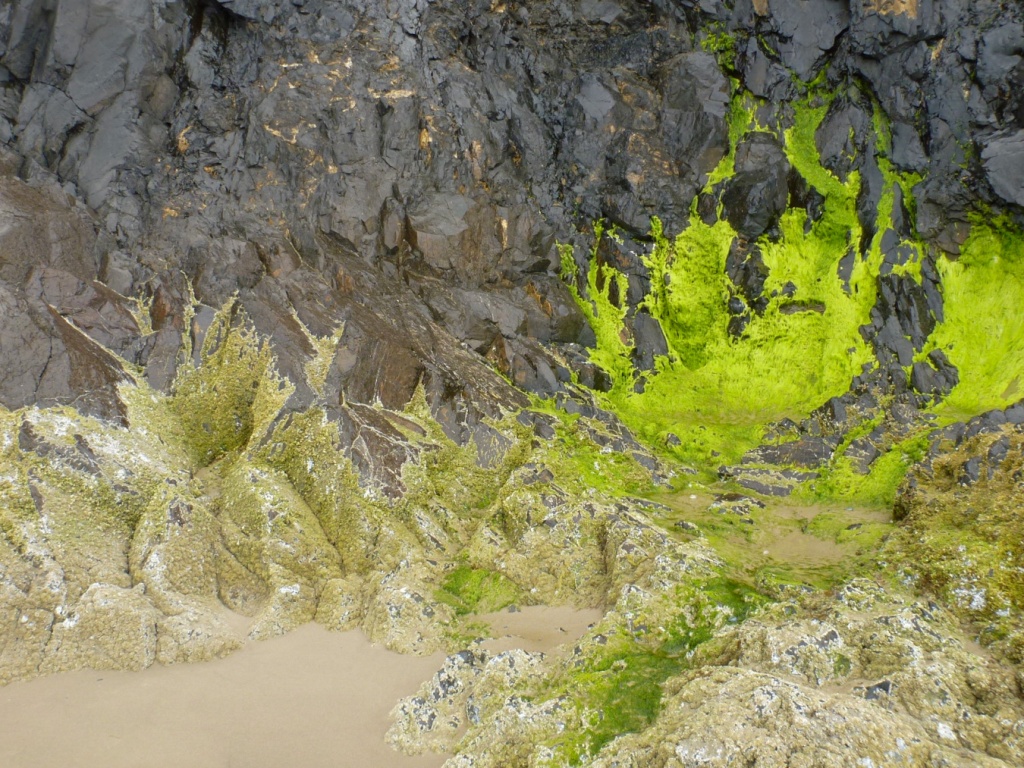




Though I’m not sure it is always the case, I feel like seep-dwelling U. intestinalis can be pretty dark green in winter and can stay that way into early spring. It reaches peak green chartreuse or yellow chartreuse later in spring and stays that way into summer. To illustrate this, the set below compares the same patch in March (left-hand panel) and July (right-hand panel).


Click here to enjoy a short video tour of lush Ulva intestinalis at a freshwater seep.
***
Discovering lush tufts of Cladophora is a high (and mid and sometimes even low) intertidal pleasure.




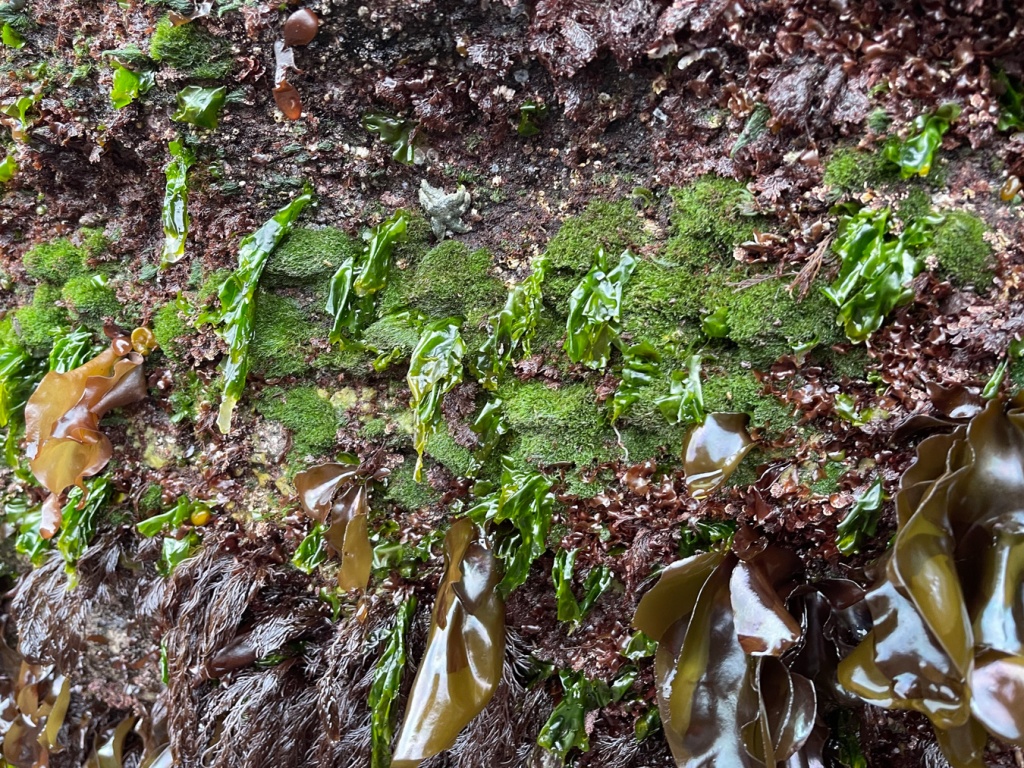
The unbranched filaments below have large cells visible to the unaided eye if you’re looking. All of the images in the set below are from semi-protected mid-intertidal settings with lots of sand. So, with habitat and cell size in mind, one of the possibilities is Chaetomorpha. (There are other contenders, though.)




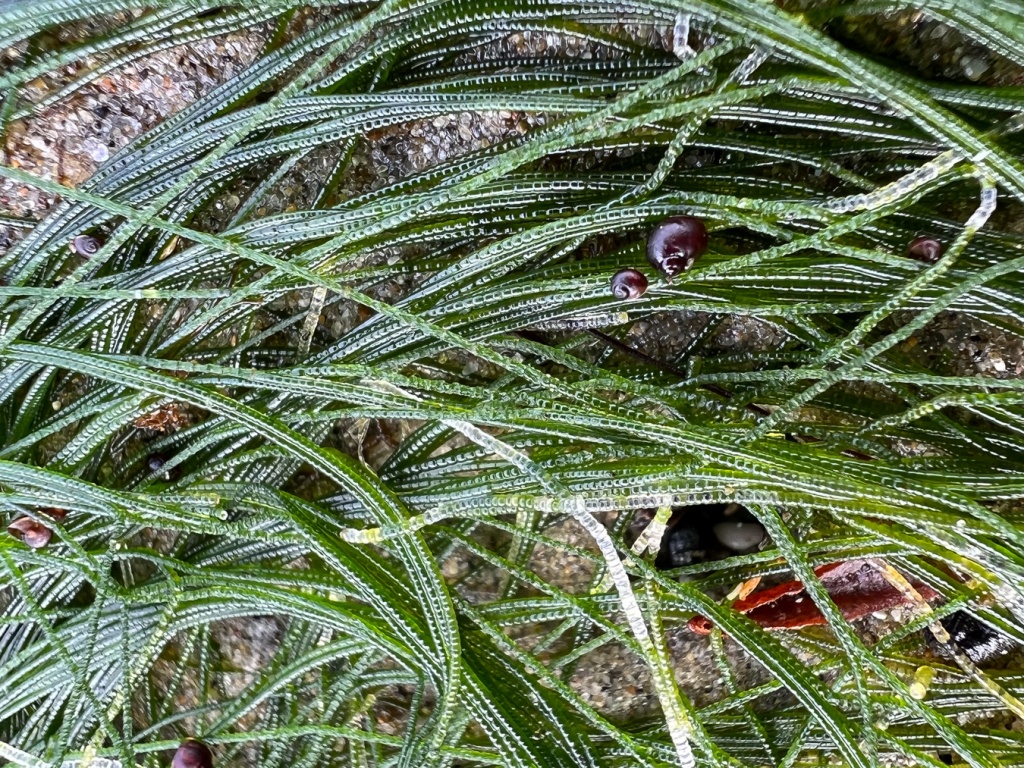
You’ll see Ulva on the exposed coast sooner rather than later. Lush growth can occur under the right conditions, and Ulva‘s diversity is enough to keep you interested (and you may have a few other feelings too) for the rest of your life.
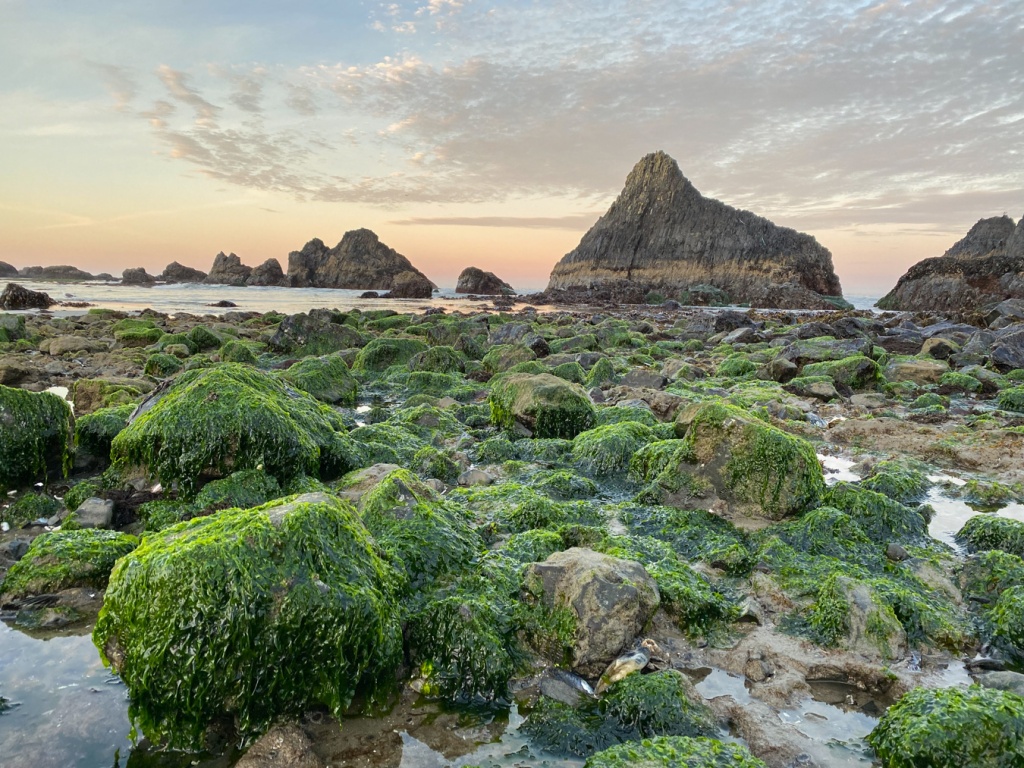

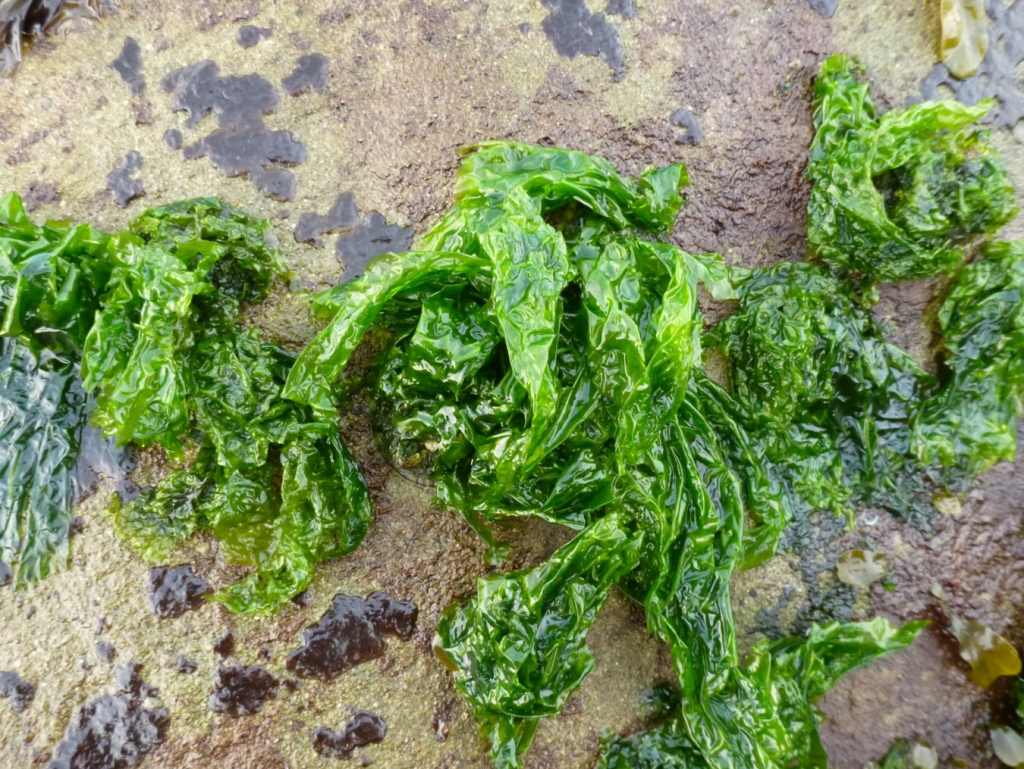



This is one of those holey ones with broad, fan-shaped blades, maybe something like Ulva fenestrata. You sure wouldn’t be out of line calling it sea lettuce.

Ulva taeniata is pretty distinctive. It’s at home in and around sand-filled tidepools, and its common name, sea spiral, makes sense.



Long ruffled blades suggest Ulva linza, but that’s just an opener to start the conversation. The examples below are from the edge of a semi-protected boulder field with plenty of sand.


While on the subject of green blades, I noticed these epiphytes washed up in a shallow, sand-filled pool. (It was May 28, 2021.) They were hitchhiking on drifting Fucus. You can gauge the time adrift, to a degree, by the small size of the other hitchhiker, pelagic gooseneck barnacles. Without too much else to go on, I think there is a decent chance these thin blades are in the Ulvaria/Kornmannia/Monostroma crowd. However, Druehl and Clarkston’s pragmatic reminder, “A definitive field identification of Monostroma is beyond the reach of mere mortals.” seems relevant. (And speaking of field identification, I don’t know what the green filaments in the top figures are either.)
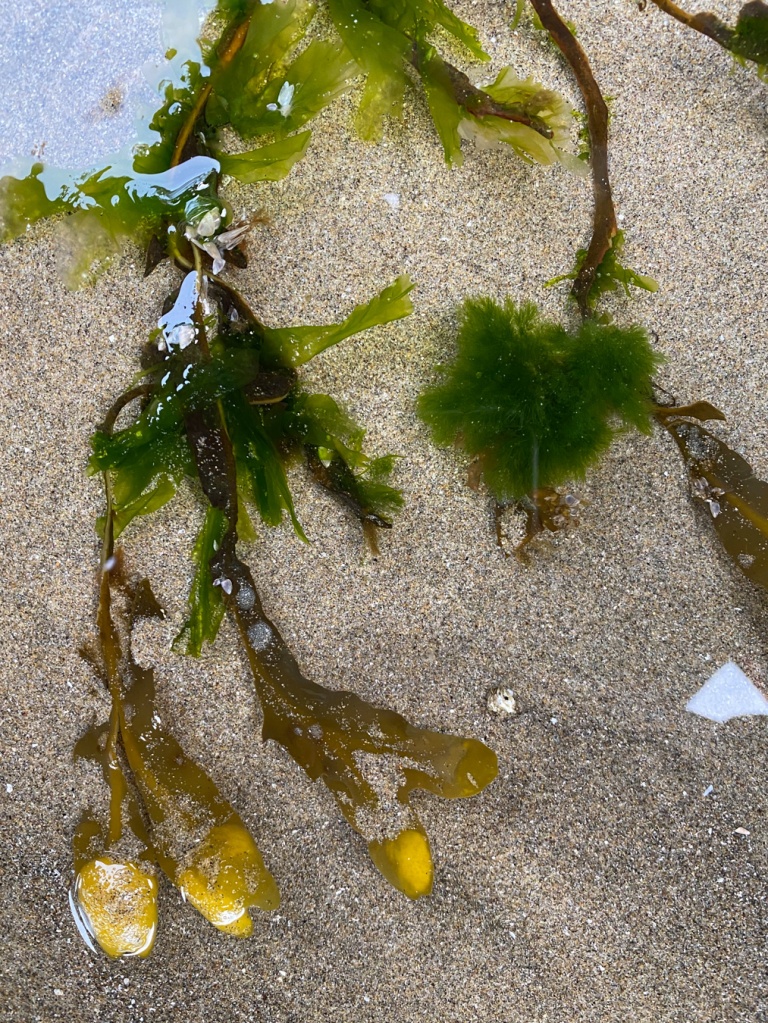

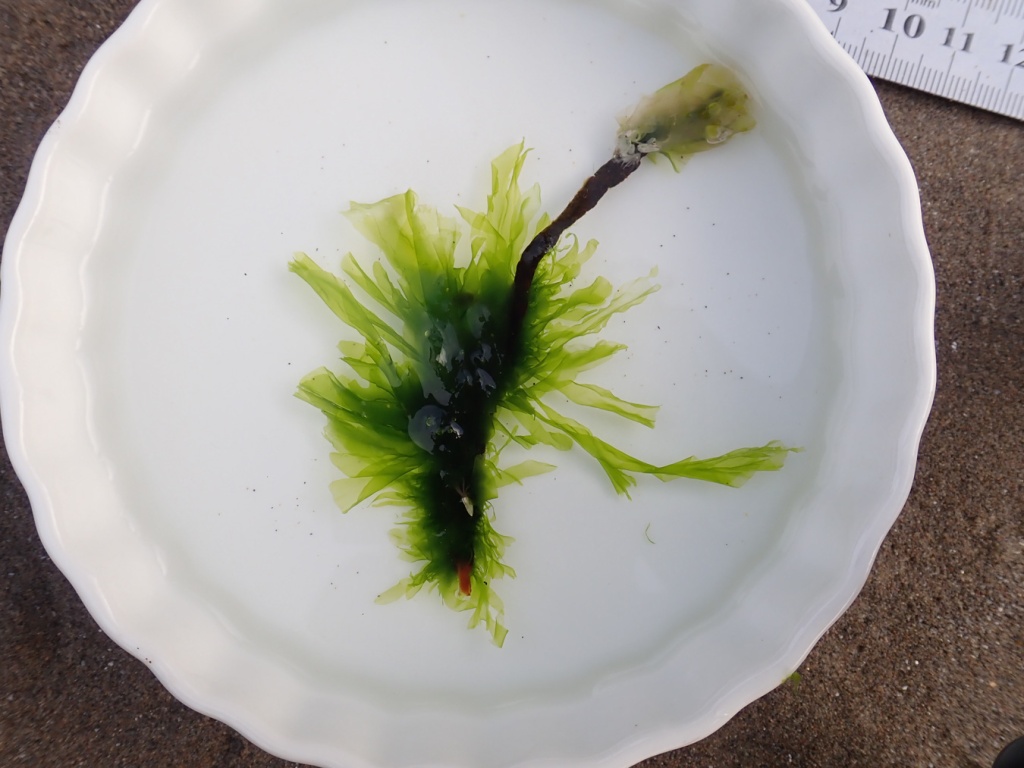
Acrosiphonia coalita, green rope



Codium fragile, sea staghorn
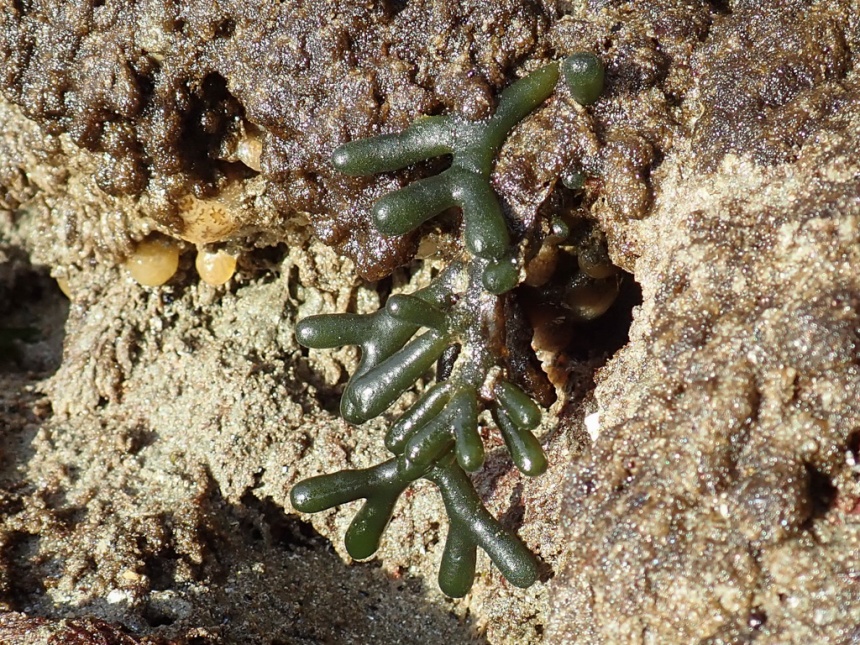
Codium setchellii, spongy cushion





References
Abbott, I. A., & Hollenberg, G. J. (1976). Marine algae of California. Stanford, Calif. Stanford University Press.
Druehl, L. D. and B. E. Clarkston. 2016. Pacific Seaweeds: A Guide To Common Seaweeds of the Pacific Coast. 2nd ed. Harbour Publishing Co.
Harbo, R. M. 2011. Whelks to Whales: Coastal Marine Life of the Pacific Northwest. 2nd ed. Harbour Publishing Co.
Kozloff, E. N. 1993. Seashore Life of the Northern Pacific Coast. 3rd ed. University of Washington Press.
Lamb, A. and B. P. Hanby. 2005. Marine Life of the Pacific Northwest. Harbour Publishing.
Mondragon, J., and J. Mondragon. 2010. Seaweeds of the Pacific Coast. Shoreline Press.
Sept. J. D. 2009. The Beachcomber’s Guide to Seashore Life in the Pacific Northwest. Revised ed. Harbour Publishing.
Web Resources
The green algae page on the Netarts Bay Today website is one of the best references you’ll find for the Pacific Northwest.
Biodiversity of the Central Coast has a great page on greens.
Seaweeds of Alaska is a standard reference for the Pacific northwest. It has a great green algae page.
This page was updated on June 4, 2022.
